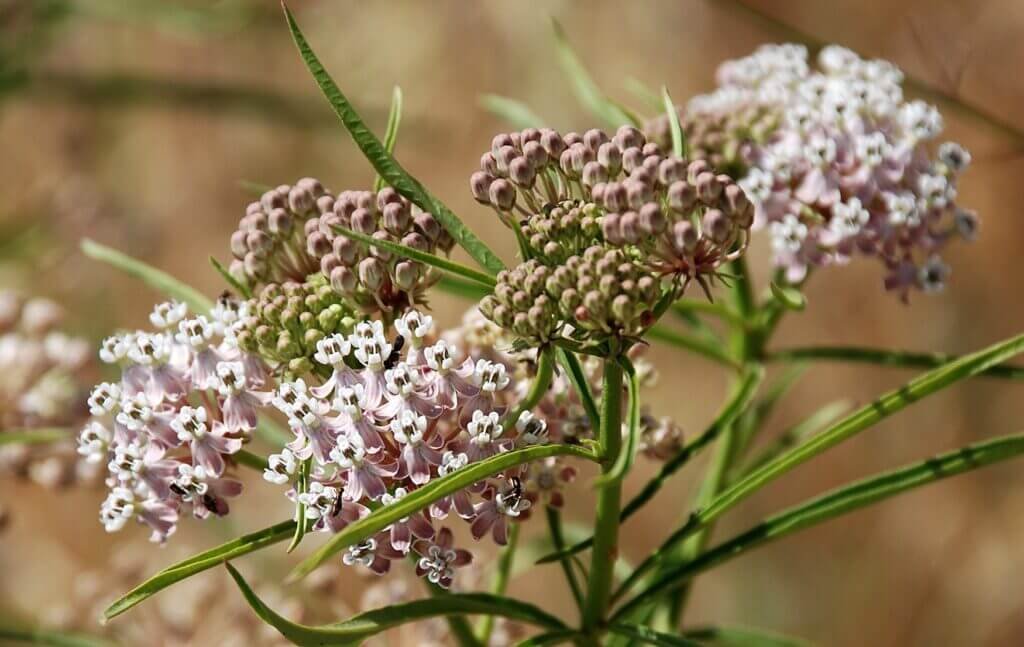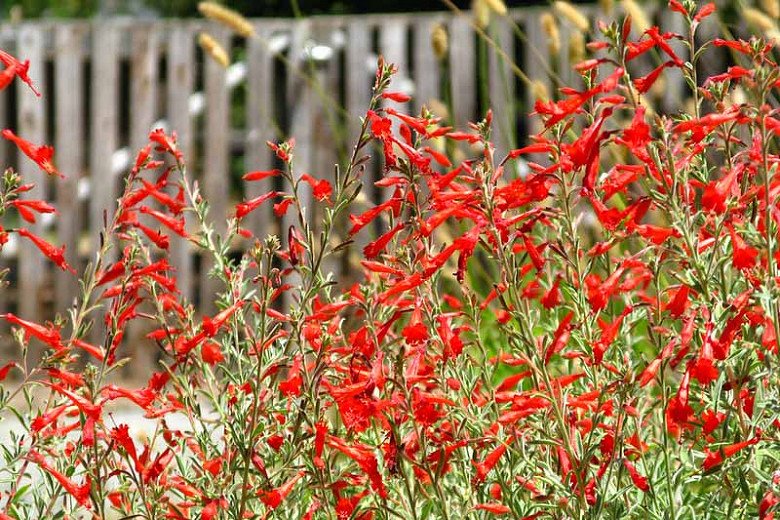There is nothing like the beauty of a native garden. Knowing that your landscape is contributing to environmental health cultivates a sense of peace and joy over and above the beauty of the garden itself. At the same time, we still want our gardens to be colorful and vibrant, and we may fear that California native plants would produce a similar look to the dry, arid hills around San Jose this time of year.
Fortunately, this fear is totally misplaced. There are many California native plants blooming this time of year in a veritable rainbow of shades. If you plan with care, you can create a thriving, gorgeous and colorful native garden that will be buzzing with life, from the slow and steady flowering of these habitat-supportive species to the many pollinating insects that come to visit them.
Plus, a native garden often requires minimal care, since the plants are naturally adapted to our local climate. This makes choosing native plants a wise decision for the novice gardener and experienced landscaper alike.
Asclepias fascicularis - Narrowleaf Milkweed
If you’re looking to support the Monarch butterflies, this is your plant. The thin stems and leaves of this California native milkweed are instantly recognizable and serve as a host plant for Monarchs and as a nectar source for several other native butterflies. Plus, they flower beautifully in pale rosy pink and white and develop long beautiful seed pods this time of year. If you haven’t planted any yet, what are you waiting for?
Image: Home Ground Habitats
Epilobium ‘Everett’s Choice’ - Everett’s California Fuschia
Vivid red tubular flowers attract hummingbirds to this low-growing shrub, a native cultivar. A host plant for the White-lined Sphinx, it is recommended to deep water this drought-tolerant specimen occasionally in the summer.
Image from Gardenia.net
Erigeron glaucus ‘Wayne Roderick’
Beautiful, large, light purple short-stemmed flowers bloom spring through fall and attract native bees and butterflies. Heat tolerant and will withstand drought, but water occasionally for best performance. A “seaside daisy” with a distinctively coastal feel that is also well-suited to rock gardens, borders, groundcover and more. Toxic to pets.
Eriogonum grande var. rubescens - Rosy Buckwheat
Rosy clusters of rosy pink flowers bloom spring to fall on this small California native shrub atop gray-green foliage. It is drought tolerant and deer resistant, and local pollinators love it - it attracts bees, butterflies, and birds! Not to mention the admiring glances of neighbors.
Monardella vollosa x purpurea - Coyote Mint Hybrid
Look closely and you’ll see the pale yellow butterfly perched on the purple flower of Monardella - Coyote Mint Hybrid. This little shrub is in fact mint scented and attracts butterflies, bees and other native wildlife. It is a host plant for several native butterflies and moths.
Mimulus aurantiacus ‘Jelly Bean Gold’
Bright yellow flowers bloom profusely spring through summer and attract natives bees and butterflies. Thrives in even difficult conditions including drought and less than optimal soil.
Mimulus aurantiacus ‘Jelly Bean Dark Pink’
Hummingbirds and butterflies love this gorgeously dark pink, yellow-throated mimulus with white edging. Large, showy flowers bloom spring through fall. Prefers full sun in coastal conditions, part shade inland.
Read the article ‘Mimulus are exotic natives of California’ from SF Gate for more on the colorful varieties of mimulus.
Image: El Nativo Growers
Penstemon ‘Catherine de la Mar’
Hummingbirds, bees, butterflies - and people - all love the electric blue-purple shades of these tall, tubular flowers. A summer favorite, Catherine de la Mar is drought-tolerant, deer resistant and makes delightful cut flowers.
Sphaeralcea ambigua - Desert Mallow
Native to Southern California and extremely drought tolerant. Requires minimal care and flowers year after year with fuzzy gray-green foliage and small, bright orange flowers on long stalks. Grows into a sizeable bush depending on conditions. Bees love it, and it is a host plant to the common checkered skipper, northern white skipper, painted lady, small checkered skipper, and West Coast lady.









